Recent Articles
Popular Makes
Body Types
10 Cars with the Best Blind Spot Detection System
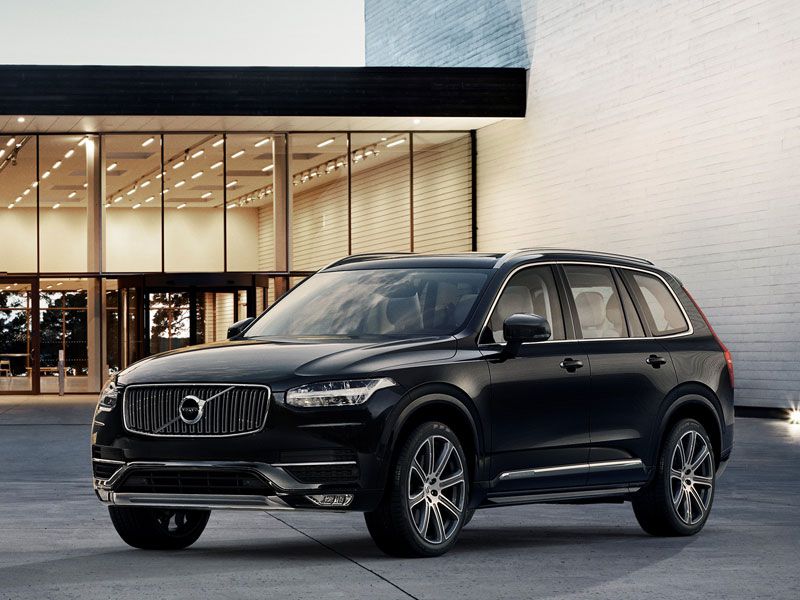
2016 Volvo XC90 front ・ Photo by Volvo
Blind spot monitoring is one of the most useful safety features offered on today’s cars. Using either cameras or sonar, they detect vehicles sitting in your car’s blind spot. Most will light up a tiny icon in the side-view mirror, and if you hit your turn signal to change lanes, they sound an alarm. Most of these systems also include rear cross-traffic alert (RCTA) functionality. When you’re backing out of a parking spot, they alert you to cars coming down the aisle that you might not be able to see.
Obviously, blind-spot monitoring is no substitute for a careful check of your mirrors and a glance over your shoulder—but we all miss things from time to time. Here are ten cars with really good blind-spot monitoring systems.
2017 Volvo XC90
Volvo has always had a penchant for improving visibility. They were the first automaker to introduce a wide-angle side view mirror, which they did in 1979, so it’s no surprise that they were also the first r to offer an electronic blind spot monitoring system. In 2005, they introduced the Blind Spot Information System (BLIS) on their 60- and 70-series cars, part of their ongoing mission to advance the cause of automotive safety, and BLIS remains an option on all Volvo cars today. The Swedish automaker’s next lofty goal is to eliminate fatalities and serious injuries in all of their new cars, and the timeline isn’t that far away: 2020 is their target. Meanwhile, you can enjoy several of Volvo’s latest-and-greatest safety features (and old favorites like blind spot monitoring) in the XC90, a thoroughly modern crossover that we love to drive.

Photo by Volvo
2017 Mazda Mazda3
Mazda was another early adaptor of blind-spot monitoring systems, and today they offer it as an option in every single one of their vehicles including their least-expensive model, the Mazda3. Advanced safety technologies often start out in higher-end cars, so we’re pleased to see it spreading to more affordable models. The Mazda3 is a long-time favorite of ours, as it’s one of the most fun-to-drive compact cars on the market. The fact that it has advanced safety technologies like blind spot monitoring makes it that much more appealing.
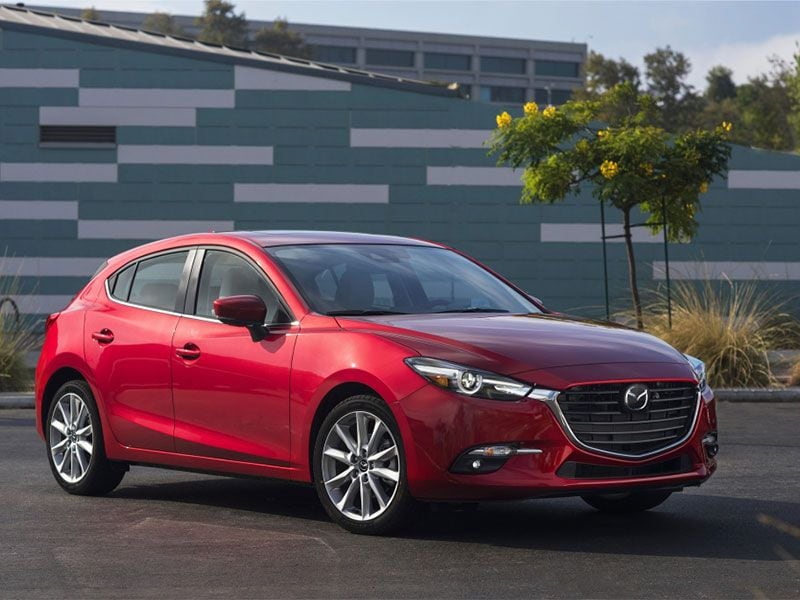
Photo by Mazda
2017 Cadillac CT6
One of the problems with a blind-spot monitoring system is that it beeps to let you know there’s a car in your blind spot – and that means that when it alerts you, it alerts everyone in the car. That’s why we like General Motors’ Safety Alert Seat, which was initially introduced in high-end cars from the Cadillac division. Instead of beeping, the system vibrates the seat cushion – on the left side for a car to your left, and the right side for a car to your right. It’s a good reminder, difficult to tune out for the driver, and very subtle, so no one in the car needs to know you very nearly changed lanes into a school bus. You’ll find the Safety Alert Seat on several Cadillac models, and the CT6 is one of our favorites. It’s a big, luxurious car that rivals the Germans for handling and driver appeal.
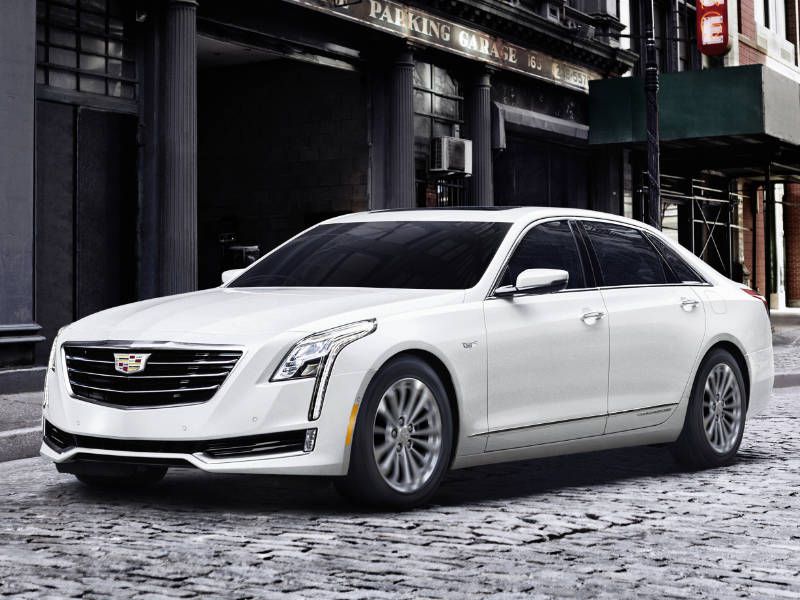
Photo by General Motors
2018 Chevrolet Equinox
We mentioned in the last slide that Chevrolet introduced the Safety Alert Seat in their high-end models, but now it’s trickling down to more affordable vehicles like the all-new 2018 Chevrolet Equinox. We like the new Equinox for a lot of reasons, and the list of available safety features is just one of them. All Chevy models feature OnStar, a subscription-based system that automatically calls for help if the car is involved in a crash, and sends emergency services if the people inside are unable to answer – so should you choose to ignore the Safety Alert Seat, you have a second layer of protection.
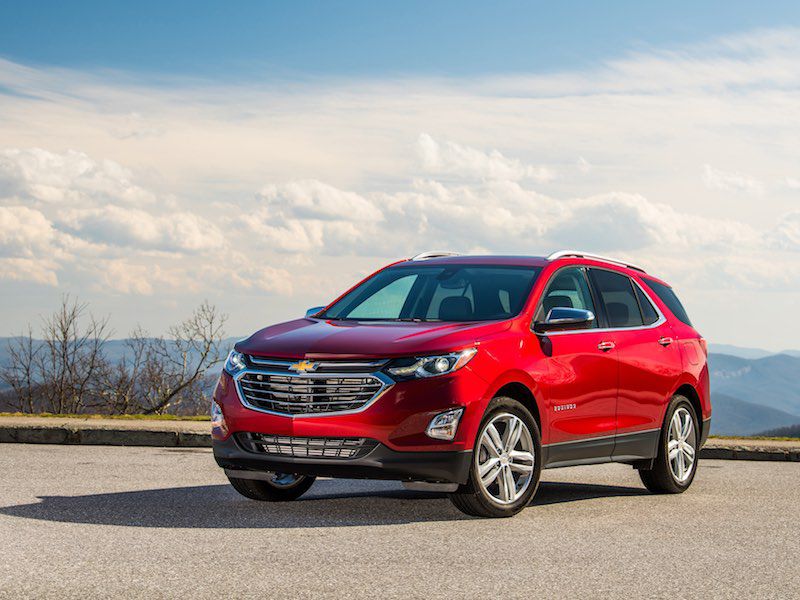
Photo by General Motors
2017 Ford F-150
Most blind spot monitoring systems provide coverage for the blind spot of the vehicle, but what if you’re towing a trailer? Even if you check your mirror carefully, judging the length of the trailer, and what is or isn’t beside it, can be very tricky. Enter the Ford F-150 pickup, which has a blind spot monitoring system that can cover bumper-tow trailers up to 30 feet long. Simply program in the details of your trailer, and the F-150’s system will compensate and monitor the extended length. This is only one of the F-150’s nifty trailer tricks; it also has an automated system that makes backing your trailer a breeze. If you tow something bigger, Ford also has this system on their F-250 and F-350 Super Duty pickups, though unfortunately, it does not work with gooseneck and fifth-wheel trailers.
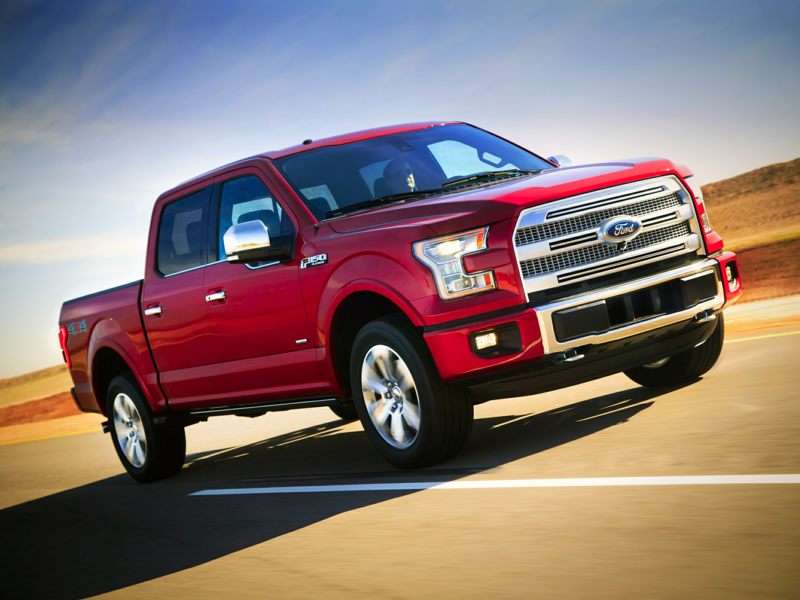
Photo by Ford
2017 Honda Fit
We’re going to call this an honorable mention because technically, the Honda Fit does not have a blind-spot warning system – at least, not in the traditional sense. Instead, Honda fits the Fit with their Lane Watch system, a small wide-angle camera mounted in the right-side mirror and displays that image on the center screen. The camera gives a wider field of view than either the mirror or a glance over your shoulder, and it has guide lines that show when a car beside you is clear of the rear bumper. Though it only protects the passenger’s side, we think it’s an outstanding idea. All of the industry is adopting backup cameras, and we hope they’ll do the same as with Honda’s LaneWatch camera.
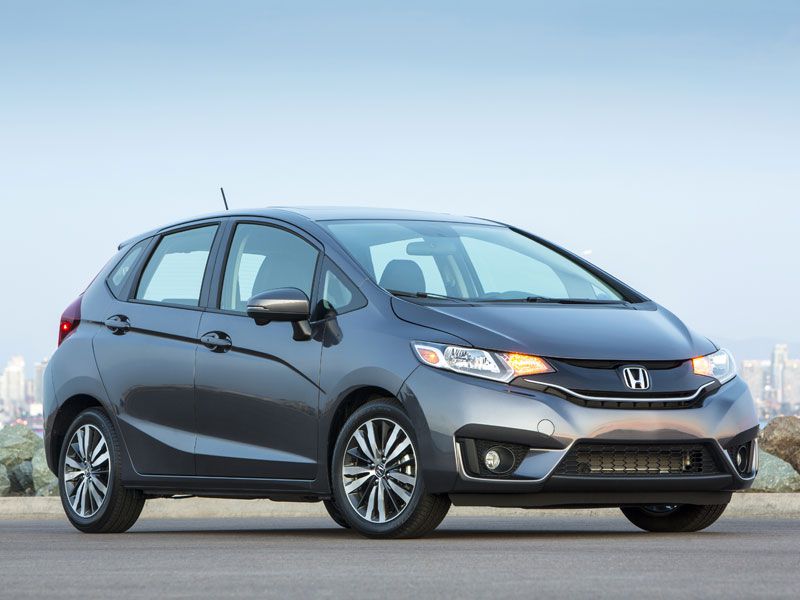
Photo by Honda
2017 Hyundai Ioniq
Good safety technology should be affordable, and that’s why we’re pleased that blind spot monitoring is optional on Hyundai’s new Ioniq, a green car that comprises hybrid, all-electric, and (coming soon) plug-in hybrid variants. The Ioniq is a car the market has been waiting for: a hybrid that gets great real-world fuel economy and comes with an affordable price tag. Keeping a car’s price down means paring down features, but we’re glad that Hyundai has included a blind-spot monitoring system on the Ioniq’s options list.
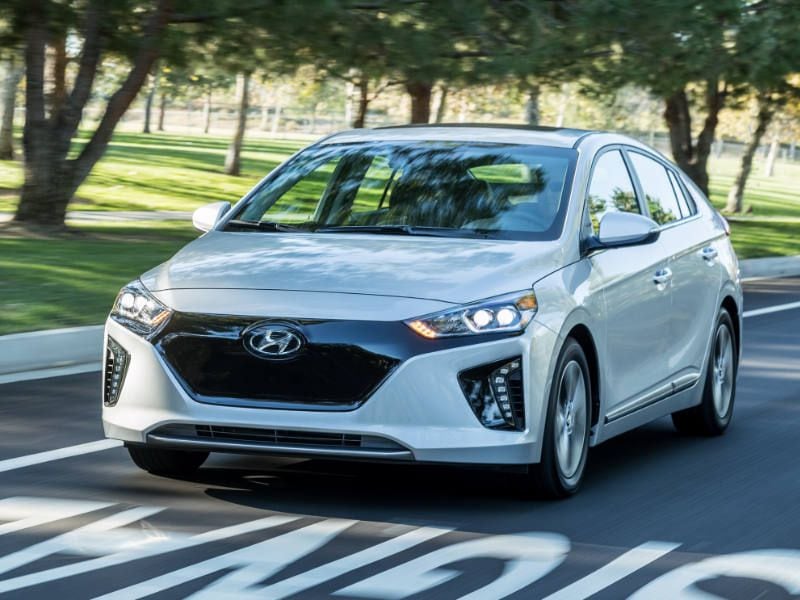
Photo by Hyundai
2017 Jeep Renegade
We’ve been happy to watch over the last twelve years as blind spot monitoring has gone from a specialized item available on select high-end models to a relatively common option (and, on more and more cars, part of the standard equipment list.) The Jeep Renegade is a popular and affordable SUV, and while blind spot monitoring isn’t standard, it is offered as a (relatively) low-cost option on all but the entry-level model. We like the Jeep Renegade for its plucky personality and good off-road abilities, and we’re pleased that it can be ordered with a good selection of safety hardware.
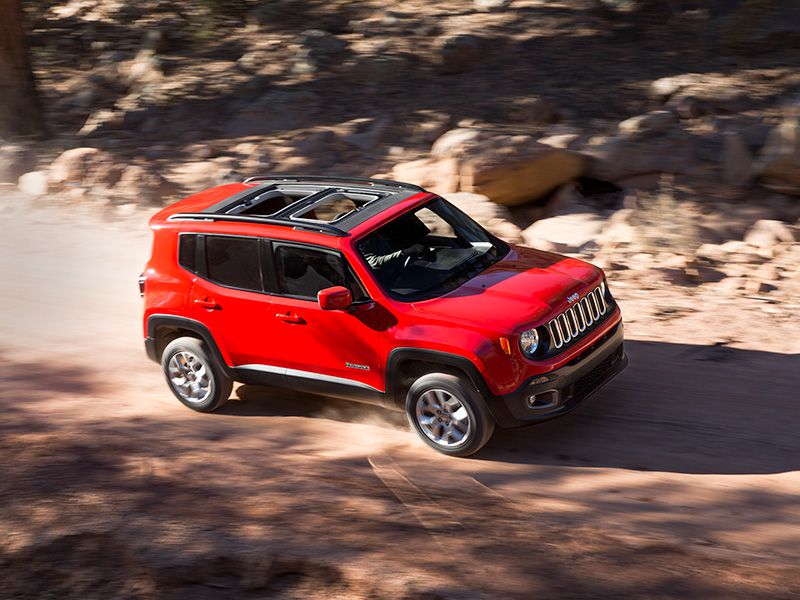
Photo by Fiat Chrysler Automobiles
2017 Mercedes-Benz E-Class
Most of the blind spot monitoring systems we’ve discussed will warn the driver of a vehicle in their blind spot, either by making noise or vibrating the seat cushion. Mercedes’ Active Blind Spot Assist goes one step further: if the car starts to drift towards a vehicle in your blind spot, it applies the brakes on the other side of the car in an attempt to steer back into your lane. Because it’s using the brakes rather than the steering, it’s easy for a driver to override the system with corrective steering action (though why you’d want to steer into a car sitting in your blind spot intentionally is beyond us.) Active Blind Spot Assist is available in the E-Class, which we think is one of the classiest luxury sedans on the market, as well as several other of Mercedes' desirable vehicles.
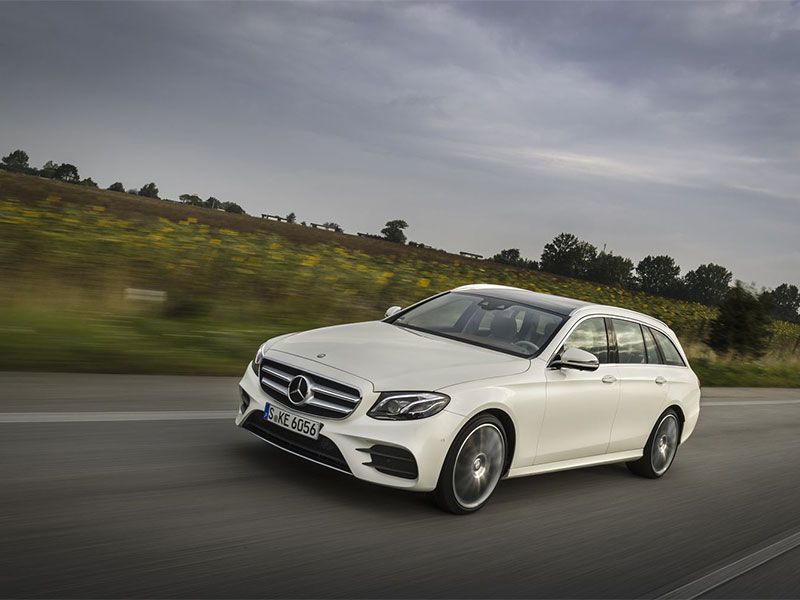
Photo by Mercedes-Benz
2017 Fiat 124 Spyder
Finally, lest you think blind spot monitoring is only limited to big cars with big blind spots, guess again: The Fiat 124 Spyder, one of our favorite two-seat convertibles, can also be had with a blind spot monitoring system. Now, it’s true that with the top down, outward visibility in the Fiat 124 Spyder is virtually unlimited, but with the top in place, it’s easy to miss cars sitting right off your quarter panel. Besides, an extra set of eyes watching the road beside you can never hurt, even if those eyes are electronic.
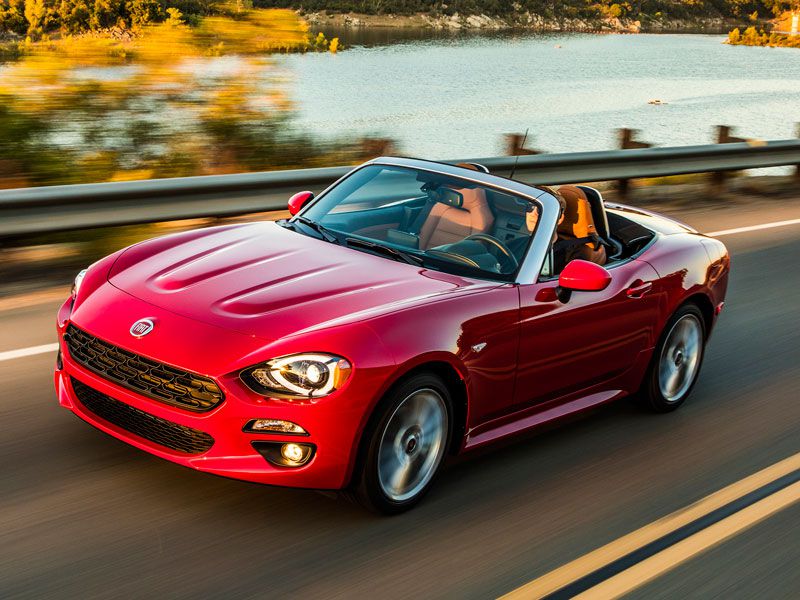
Photo by Fiat Chrysler Automobiles